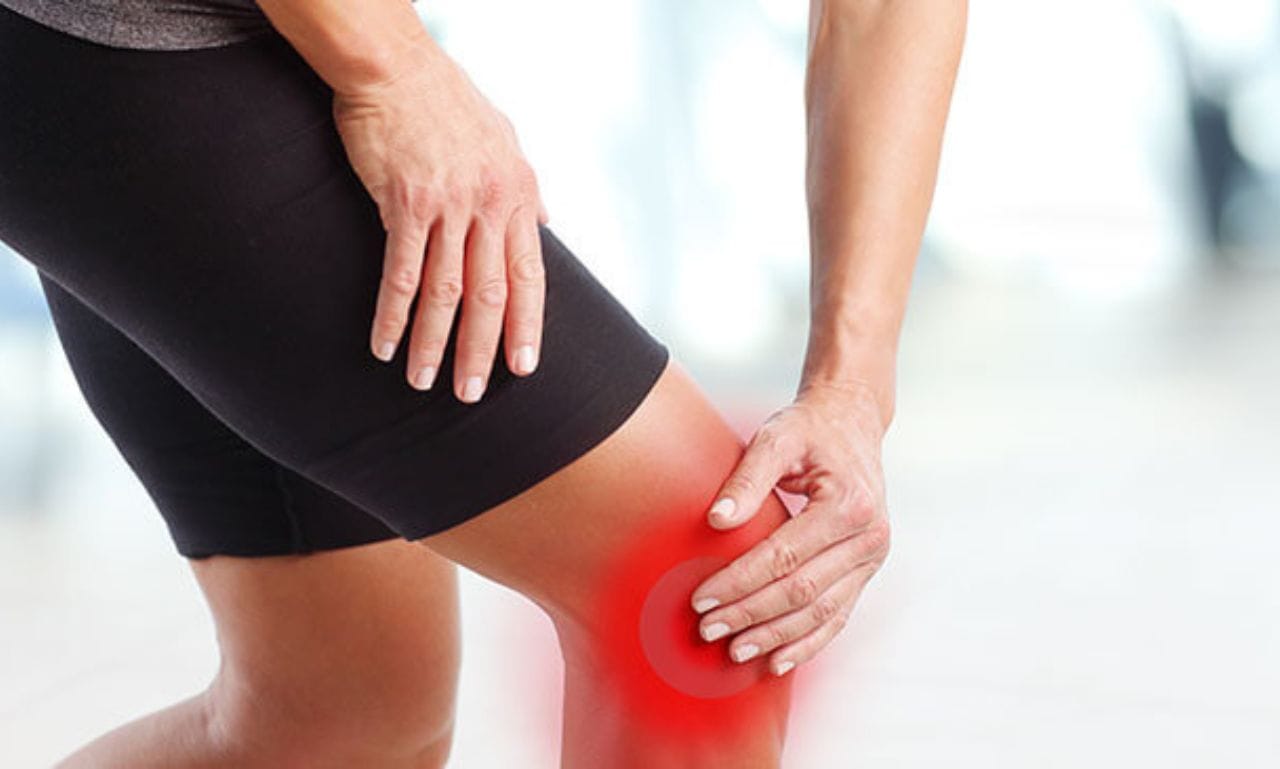Attrities: Complete Guide to Joint Health and Care
Joint health is a crucial aspect of our overall well-being, yet it’s often overlooked until issues arise. If you’ve ever experienced discomfort or pain in your joints, you know how debilitating it can be. That’s where understanding attrities comes into play. This term encompasses various joint conditions that affect millions worldwide, impacting their daily lives and activities.
With so much misinformation circulating about joint problems, it’s essential to cut through the noise and get to the heart of what truly matters—your joint health! Whether you’re looking for ways to maintain healthy joints or seeking effective treatments for existing issues, this comprehensive guide will walk you through everything you need to know about attrities and its implications on your life. Let’s dive deeper into the world of joint care and discover how you can keep moving with ease!
What is Attrities?
Attrities is a term often used to describe various forms of joint inflammation and pain. While it may sound like a single condition, attrities encompasses multiple issues related to the joints.
At its core, this term reflects the wear and tear on our body’s connective tissues. It can lead to discomfort and reduced mobility over time. Many people experience this as they age or after an injury.
The most common types include osteoarthritis and rheumatoid arthritis. Both conditions present unique challenges but share common symptoms such as stiffness and swelling.
Understanding attrities is crucial for effective management. Identifying early signs can help prevent further deterioration of joint health. Awareness allows individuals to seek timely treatment options tailored for their specific needs.
Understanding the Different Types of Joint Issues
Joint issues can vary widely, affecting individuals in different ways. One common type is osteoarthritis, which typically arises from wear and tear on the joints over time. This degenerative condition results in pain and stiffness.
Rheumatoid arthritis is another serious concern. It’s an autoimmune disorder that occurs when the body’s immune system attacks joint linings. This leads to inflammation and significant discomfort.
Gout presents a unique challenge as well. It’s characterized by sudden spikes of intense pain due to uric acid crystals forming in the joints, often targeting the big toe.
Bursitis involves inflammation of bursae—small fluid-filled sacs cushioning bones near joints—causing localized swelling and tenderness.
Other less common conditions include psoriatic arthritis and septic arthritis, each with its own set of symptoms and treatment approaches. Understanding these various types helps in seeking appropriate care tailored to specific needs.
Causes and Risk Factors for Joint Problems
Joint problems can arise from various causes that often intertwine. Age is a significant factor; as time passes, cartilage wears thin and weakens. This natural deterioration makes joints more susceptible to issues.
Genetics also play a role. If joint disorders run in the family, you might be at higher risk for conditions like attrities or osteoarthritis.
Lifestyle choices are crucial too. Obesity adds extra pressure on weight-bearing joints, leading to increased wear and tear over time. Poor diet lacking essential nutrients can exacerbate inflammation.
Injuries are another common trigger. A previous joint injury may lead to chronic pain down the line if not treated properly.
Certain health conditions such as diabetes or autoimmune disorders heighten vulnerability to joint issues by causing inflammation or altering body mechanics.
Signs and Symptoms of Joint Issues
Joint issues often manifest through a variety of signs and symptoms that can significantly impact daily life. Pain is typically the first indicator, ranging from mild discomfort to sharp sensations during movement.
Swelling around the joints may occur as inflammation develops. This swelling can limit mobility and make simple tasks challenging.
Stiffness is another common sign, especially after periods of inactivity or upon waking in the morning. It can hinder flexibility and range of motion.
You might also notice a crunching or popping sound when moving your joints, known as crepitus. This symptom often indicates underlying cartilage changes or joint wear.
Fatigue may accompany joint problems, as chronic pain drains energy levels over time. Being aware of these signs helps you seek timely care and maintain better joint health.
How to Maintain Healthy Joints
Maintaining healthy joints is essential for an active lifestyle. Start by incorporating a balanced diet rich in omega-3 fatty acids, antioxidants, and vitamins that support joint health. Foods like salmon, walnuts, leafy greens, and berries can be beneficial.
Staying hydrated also plays a crucial role. Water helps lubricate joints and keeps cartilage functioning smoothly. Aim to drink plenty of water throughout the day.
Regular exercise strengthens muscles around the joints, providing better support and stability. Focus on low-impact activities such as swimming or cycling to minimize stress on your joints.
Don’t forget about stretching! Gentle stretches improve flexibility and range of motion while reducing stiffness.
Listen to your body. If you experience pain during any activity, it’s important to rest and consult with a healthcare professional if needed. Prioritizing these habits can lead to healthier joints over time.
Treatment Options for Joint Problems
When dealing with joint problems, identifying the right treatment is essential. Medical professionals often recommend a combination of therapies tailored to individual needs.
Nonsteroidal anti-inflammatory drugs (NSAIDs) can help alleviate pain and reduce inflammation. These options are typically the first line of defense for many patients.
Physical therapy plays a crucial role in recovery. A therapist can create personalized exercise regimens that enhance flexibility and strengthen surrounding muscles.
For more severe cases, corticosteroid injections may provide quick relief from pain and swelling. This option works directly within the joints for immediate results.
Surgery remains a last resort but is sometimes necessary for extensive damage or chronic conditions like attrities. Joint replacement has advanced significantly, offering new hope for those suffering from debilitating joint issues.
Alternative treatments such as acupuncture or massage therapy can also be beneficial by enhancing overall well-being and reducing discomfort over time.
Natural Remedies for Joint Pain
Natural remedies can provide significant relief for joint pain. Many people turn to these options before seeking medical intervention.
Turmeric is a popular choice, thanks to its active compound curcumin. It has powerful anti-inflammatory properties that may help reduce swelling and discomfort in the joints.
Ginger is another effective remedy. Its natural compounds have been shown to alleviate pain and stiffness associated with various joint issues.
Cold and hot therapies are simple but useful methods too. Ice packs can numb sharp pain, while heat pads relax tense muscles surrounding the joints.
Omega-3 fatty acids found in fish oil support joint health by reducing inflammation. Regular consumption could lead to noticeable improvements over time.
Staying hydrated helps maintain lubrication within your joints, potentially easing discomfort during movement. Integrating these remedies into your routine might offer a more holistic approach to managing joint pain.
Importance of Exercise for Joint Health
Exercise plays a crucial role in maintaining joint health. It helps strengthen the muscles surrounding the joints, providing better support and stability. With stronger muscles, your joints become less susceptible to injuries.
Regular physical activity also enhances flexibility. Stretching and movement keep ligaments and tendons limber, which is essential for preventing stiffness. This increased range of motion helps you perform daily activities with ease.
Moreover, exercise contributes to weight management. Excess weight puts additional stress on the joints, particularly those in the knees and hips. By keeping a healthy weight through activity, you reduce strain on these critical areas.
Low-impact exercises like swimming or cycling are excellent choices for joint health. They allow you to build strength without putting undue pressure on your joints.
Incorporating regular exercise into your routine can significantly improve overall well-being while protecting your valuable joint function over time.
Tips for Preventing Joint Issues
Preventing joint issues starts with a balanced diet. Incorporate plenty of fruits, vegetables, and whole grains to provide essential nutrients.
Stay hydrated. Drinking enough water helps maintain joint lubrication, reducing friction between cartilage surfaces.
Regular exercise is key. Focus on low-impact activities like swimming or cycling to strengthen muscles without stressing your joints.
Maintain a healthy weight. Excess body weight puts additional pressure on your joints, especially in the knees and hips.
Practice good posture while sitting and standing. This not only reduces strain but improves overall body alignment as well.
Consider incorporating supplements such as omega-3 fatty acids or glucosamine after consulting with a healthcare professional for added support.
Listen to your body’s signals. Rest when needed and avoid repetitive movements that could lead to strain over time.
Conclusion
Taking care of your joints is essential for a healthy and active life. Awareness of conditions like attrities can help you seek timely intervention.
It’s important to listen to your body. Pay attention to any signs that indicate joint distress. Early detection often leads to better management options.
Incorporating proper lifestyle choices can make a significant difference. From nutrition to exercise, small changes pave the way for long-term benefits.
Consulting with healthcare professionals ensures you’re on the right track. They can provide personalized advice tailored to your specific needs.
Fostering joint health is about balance—between activity and rest, treatment and prevention, awareness and action. Prioritize it today for a more mobile tomorrow.
FAQs
What is attrities?
Attrities refers to a range of joint issues that can lead to pain, swelling, and decreased mobility. It encompasses various types of arthritis and other conditions affecting the joints.
What are the common symptoms of joint problems?
Common symptoms include stiffness, swelling, tenderness, redness around the joint area, and reduced range of motion. Some people may also experience warmth in the affected joints.
How can I maintain healthy joints?
Maintaining healthy joints involves regular exercise, a balanced diet rich in anti-inflammatory foods, staying hydrated, maintaining a healthy weight, and avoiding repetitive strain on your joints.
Are there natural remedies for joint pain?
Yes! Many find relief through natural remedies such as turmeric extract or ginger tea. Hot or cold compresses can also help reduce inflammation and discomfort.
Is exercise essential for joint health?
Absolutely. Low-impact exercises like swimming or cycling strengthen muscles around the joints without putting too much pressure on them. Regular activity promotes flexibility and reduces stiffness.
What tips do you have for preventing joint issues?
To prevent joint problems: stay active but avoid excessive stress on your body; keep a healthy weight; pay attention to posture; engage in strength training; ensure proper ergonomics at work; consider supplements if needed after consulting with a healthcare provider.
When should I seek medical advice about my joint health?
If you notice persistent pain or significant changes in your ability to move any joints—especially if accompanied by fever or swelling—it’s advisable to consult with a healthcare professional promptly. They can provide accurate diagnosis and treatment options tailored to your needs.







